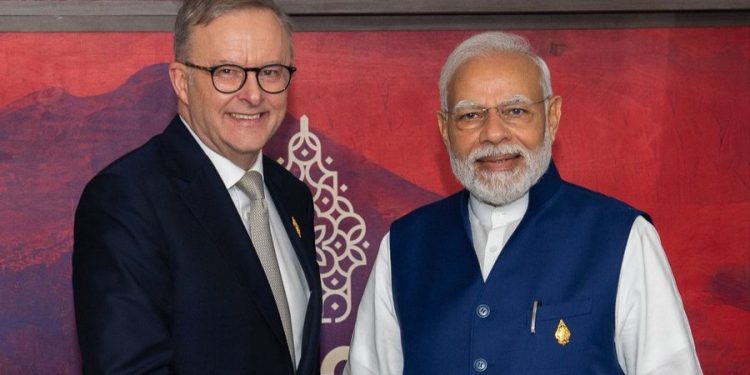Australian Parliament has approved the bilateral free-trade agreement with India. For Australia to diversify its exports from the unstable Chinese market to India and to establish new bilateral economic links, the deals are essential. The House of Representatives passed the legislation with ease on Monday, and the Senate passed them into law on Tuesday.
Anthony Albanese, the prime minister of Australia, tweeted that “Our Free Trade Agreement with India has passed through parliament.”
Don Farrell, the minister of trade, claimed that India had proven its dedication to the two countries’ economic ties by the calibre of the agreement reached. According to Farrell, “Closer economic ties with India are a critical component of the government’s trade diversification strategy.”
The agreement guarantees that Australia won’t be shut out of any future trade deals that India might strike with other countries, he added, assuring Australia of increased access to markets and commerce.
According to him, “As an interim agreement, however, the AI-ECTA is not as comprehensive in its scope and coverage as other trade agreements and under-achieves in areas of potential and immediate interest to Australia such as wine”.
“The quality of this Agreement, in terms of market access and opportunity for Australian businesses, demonstrates India’s commitment to our bilateral economic partnership,” Farrell added.
For Australian companies, “India presents unparalleled growth opportunities across a range of sectors, from food and agriculture, technology and green energy, to health and education services,” he noted.
Notably, on April 2, the Economic Cooperation and Trade Agreement (ECTA) between Australia and India was signed.
Australian enterprises will have access to or room to expand in a market with close to 1.5 billion consumers, according to the Australian government, which also says that the agreement would improve Australia’s position as the major economy with the fastest rate of growth in the world.
Committee chair MP Josh Wilson said the Committee has underlined the significance of enhanced tariff reductions, more access to services, and on more general issues like intellectual property, cultural heritage, the environment, and labour rights as Australia progress toward a Comprehensive Economic Cooperation Agreement.
However, it claimed that the Committee had voiced reservations about the length and calibre of consultations, the openness of the talks, and the absence of independent modelling and analysis of trade agreements.
Before any action is taken that obligates Australia to the terms of a treaty, the Commonwealth Parliament has appointed the Joint Standing Committee on Treaties to consider and report on all treaty measures proposed by the Government.
When the deal is put into effect, more than 6,000 diverse industries from India, including textiles, leather, furniture, jewellery, and machinery, would have duty-free access to the Australian market.
According to the agreement, Australia will grant zero-duty access to India starting on day one for roughly 96.4% of exports (by value). This applies to a wide range of goods that are now subject to a 4%–5% customs charge in Australia.
Textiles and apparel, a few agricultural and seafood products, leather goods, furniture, sporting goods, jewellery, machinery, electrical items, and railroad trains are all labour-intensive industries that would greatly benefit.
In 2021–22, India’s goods exports were USD 8.3 billion while its total imports were USD 16.75 billion.
Piyush Goyal, the minister of commerce and industry, has previously indicated that the pact will assist increase bilateral trade from USD 27.5 billion at present to USD 45-50 billion over the course of the following five years.











